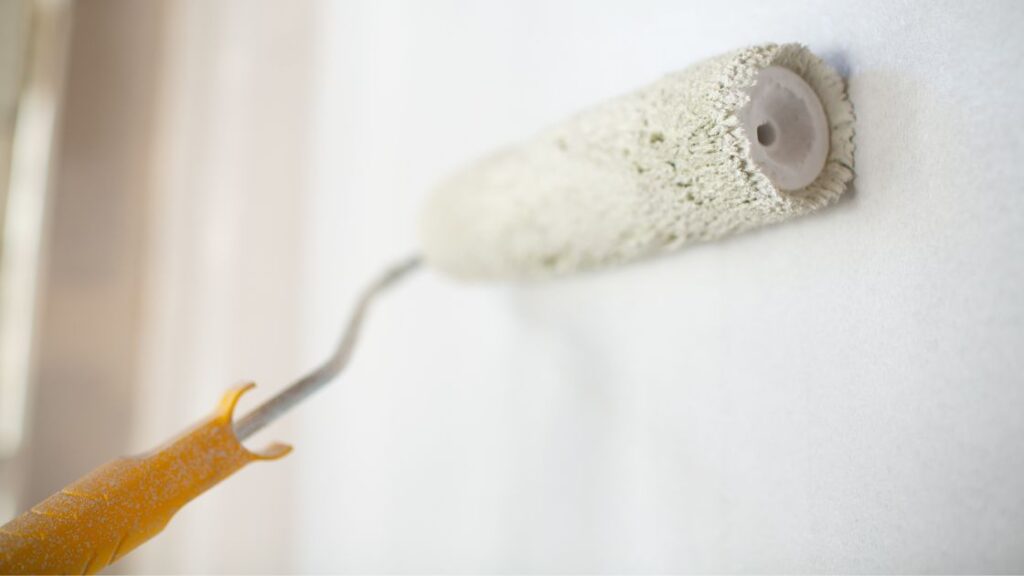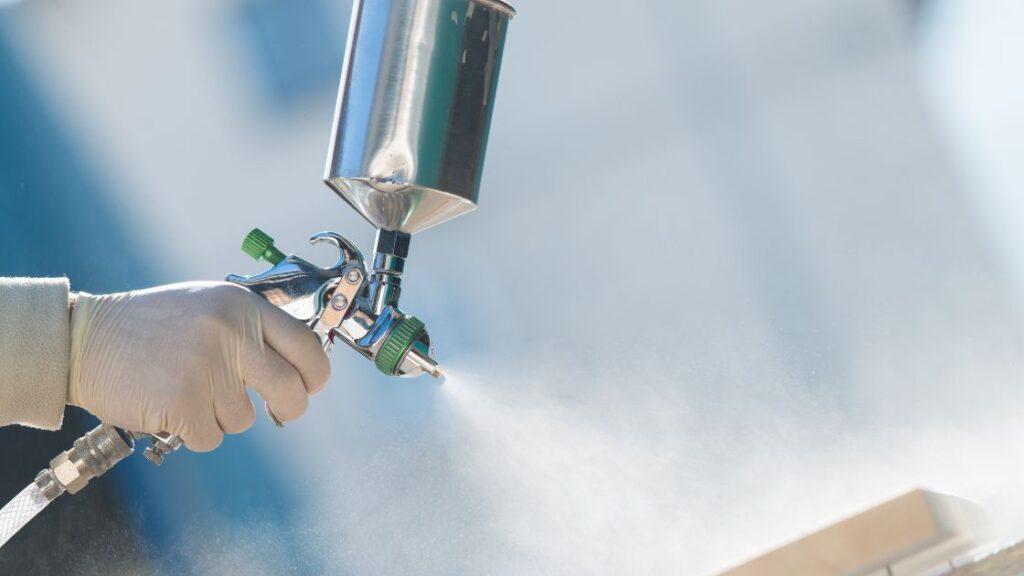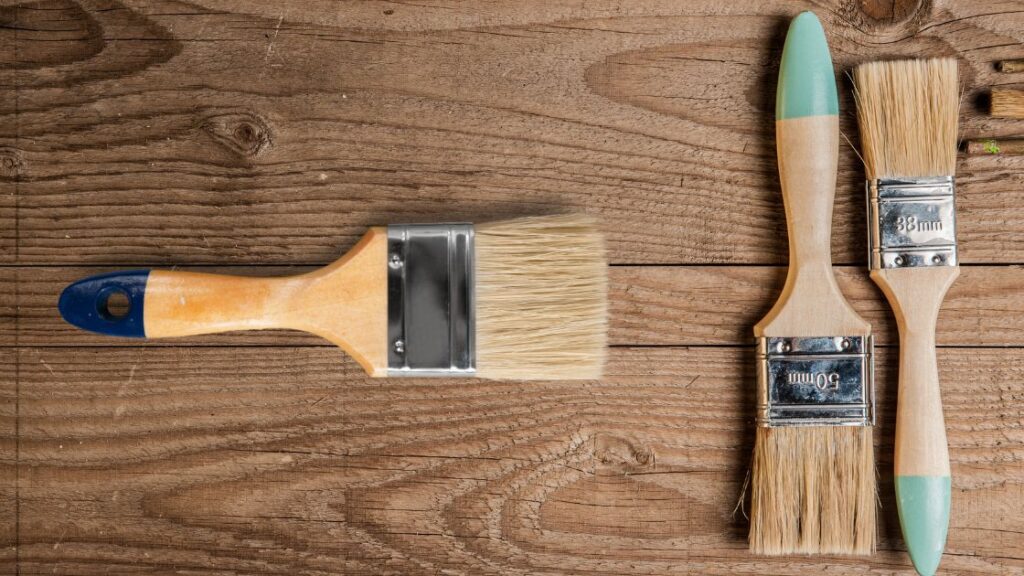Table of Contents
When it’s time to spruce up your home with a new painting project, there are several options available to you. We have the traditional tried and trusted methods of rollers and brushes in one corner, and we have paint sprayers in the other corner. Which one is better?
In the words of Irene Au:
“Good design is like a refrigerator, when it works no one notices but when it doesn’t it sure stinks.”
That’s right – if you choose the wrong tools for the job, you are going to mess up, and people are bound to notice.”
In this blog, we will look at the benefits of using a paint sprayer versus traditional brushes and rollers. For instance, a roller is convenient but sacrifices perfection. We will also look at the pros and cons, and answer a few common questions you may have if you’re painting by yourself.

When You Should Use a Paint Roller or Brush
A paint roller is the best choice when painting a large area. It’s an efficient way to apply the paint evenly and thoroughly with little effort. Rollers can hold paint, so they can cover larger surfaces in one go. They are also ideal to use on flat, smooth surfaces.
Brushes, on the other hand, are perfect for those smaller paint jobs – they are more pliable, so it is easy to control your movements in the area you are working on. Paint brushes are nifty if you want to create more textured effects or on textured surfaces, and can reach tight corners and crevices.
You Haven’t Used a Sprayer Before
Handling a spray gun is not rocket science, but it certainly requires a bit of practice to perfect. You might not want to try your hand the first time on your precious walls. You will also likely not have the correct PPE to prevent you from breathing in the paint that’s floating around, so best stick to the tried and tested methods – for now, at least.
You Don’t Like Masking
We know, masking the corners and edges can be tedious. In this case, it’s back to basics with a traditional roller or paintbrush. Paint sprayers, well, spray, so you are going to make a mess of things if you don’t mask up. If masking isn’t for you, you will in fact be better off painting the edges using a brush. Rollers can’t cut the corners as cleanly.
You Are Only Painting Walls
Paint rollers and brushes work best for painting plain walls (not textured or brick walls) because they allow you to paint in a smooth and even manner. Paint rollers are faster and easier than traditional brushes, making them ideal for painting large surfaces such as walls. They also work more accurately, allowing you to cover the entire surface of the wall with paint. Rollers come in different sizes and shapes, so you can find one that is perfect for your needs.
You Prefer Simplicity
When painting a large surface or area with many contours, a paint roller is the better choice. Paint sprayers are not able to cover such a large surface evenly without much waste. Rollers can paint large surfaces quickly and effortlessly without sacrificing quality. Paint sprayers are best used for painting small surfaces that require attention to detail.
When to Spray On Paint
Painting is a skill that requires patience and experience. Spray painters are handy gadgets that let you effortlessly cover large surfaces with one application of your favourite paint.
Spraying gives you full control over the shape and tone of your paint job without having to worry about getting it right on small areas like corners or joints where mistakes can be easily made. With a sprayer on hand, you can trust that your wall will look its best when the last bit of paint has dried.
When the Interior Is Empty
When painting an interior surface that is empty, spraying on paint is a quicker and more efficient way to complete the task. Take note, the emphasis here is on “empty.” A sprayer always risks overspray on your furniture, carpets, and precious heirlooms. The ease of application isn’t worth the heartache of cleaning up afterwards.
When You Have Details and Texture of the Same Color
Spray painting is great for applying intricate little details or patterns onto surfaces, including wood and concrete. With its precision, it allows you to focus on specific portions of the surface at a time, making it easy to achieve the desired results. The benefits of using this technique include precise application and control over the quantity of paint ejected from the can – it’s even great for painting furniture.

Spraying Paint vs. Rolling Paint – Pros and Cons
Spraying Paint Pros
- Speedy application – Just fill the barrel with paint, hit the trigger, and you are ready to paint!
- Creates a smooth, flawless coat that is free from brush marks.
- Easy access to those hard-to-reach areas
- No need to clean brushes and rollers afterwards
- Can be used to apply varnish and sealant as well
Spraying Paint Cons
- Required quite a bit of prep work like removing furniture, masking, etc.
- Uses 2 to 3 times more paint than rolled or brushes
- Not practical to use it outside on windy days
- Can produce uneven coverage if you are inexperienced and layer to paint too thick
- Does not properly cover cracks and seals
Requires safety gear
Rolling Paint Pros
- Rolling and brushing require the minimum prep work and masking is not essential
- Can give both thick and light textures with high-quality outcomes
- It allows the paint to settle and better penetrate
- There is no risk of overspray
Rolling Paint Cons
- Brushes and rollers can leave streaks on the surface
- There is a risk of dripping paint
- The process is tedious and more time-consuming so it costs more labour
- Not ideal for smaller details and delicate trims
- Difficult to reach specific areas

Frequently Asked Questions
Is it better to roll or spray a ceiling?
There really isn’t a right or wrong answer here – it depends on your preference. Spraying will be easier and more convenient, especially on popcorn ceilings. It also dries quicker than traditional methods. However, for flat ceilings that require thicker coating, rollers are the way to go.
Should you roll paint after spraying?
Assuming you have some experience in using a sprayer, there is no need to apply paint with a roller afterwards. Unless you botched it, of course.
Paint (or Spray) it Pretty
Now that we’ve compared rollers and sprayers, you should have a better understanding of what they can do for you, and which will be best suited for you.
Sprayers are perfect to cover large surface areas half the time but use more paint. They are also ideal to apply finer touches. Rollers, on the other hand (pun intended), are great if you are on a budget – no matter if you are painting indoors or outdoors. It isn’t really about which one is better – it is about which is best for you.

Robert Martinak is a Painting Technology Specialist with over 30 years of experience in the field. He is based in Dublin, Ireland and has extensive knowledge and expertise in the application and management of painting projects.












